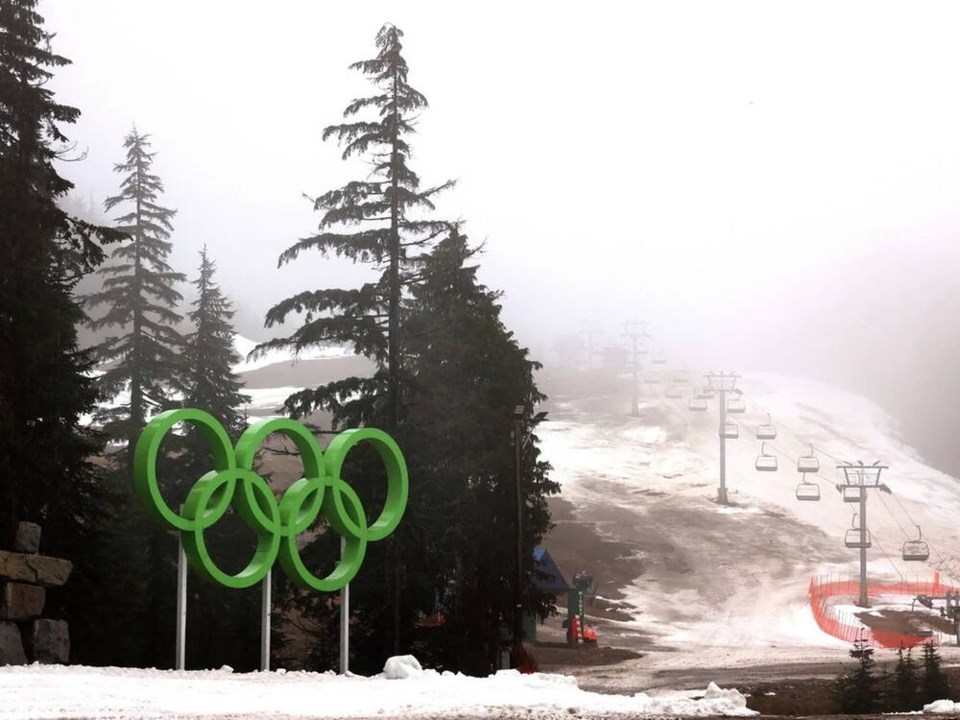B.C. Hydro is bracing for another year of potentially severe drought in key watersheds that feed its major dams, as the B.C. River Forecast Centre reports below-average snowpacks.
The utility is used to managing the ups and downs of high water years and low water years with a history that stretches back 80 years, but “this is towards the worst end of what we’ve seen historically,” CEO Chris O’Riley said. “We are wary about the potential for extreme weather with climate change and yeah, it’s definitely something where we’re managing and using all the tools we have.”
O’Riley said that will include importing more electricity to help preserve reservoir levels, a strategy that led to high levels of electricity purchases in 2023, but paid off in its ability to deliver electricity through record demand during January’s cold snap.
“I do want to say (that) customers should have confidence that we’ll have enough power for them,” O’Riley said.
The B.C. River Forecast Centre’s latest bulletin, released Thursday, showed the snowpack in B.C. mountains, critical for maintaining water flows in streams, rivers and replenishing B.C. Hydro’s reservoirs, are as bad as 40 per cent below normal.
That is lower than the snowpack at the same point last year, which preceded last summer’s severe drought and carried through into this winter.
Prevailing conditions now have the B.C. River Forecast Centre bracing for potentially worse conditions in 2024 and people affected by drought “should expect a similar situation to last year,” according to hydrologist Jonathan Boyd.
Drought through 2023 turned B.C. Hydro into a net electricity importer with the utility having to dial back domestic electricity production from key hydro dams on the Peace River and in the Kootenays to help preserve their ability to generate power through the winter.
B.C. Hydro survived record electricity demand during January’s cold snap thanks to the utility’s “careful plan” that involved electricity imports in the summer months when B.C.’s demand is typically lower, despite increasing use of air conditioning, O’Riley said.
However, last fall, B.C. Hydro stated in its third-quarter financial report that inflows to its reservoirs up to the end of September “were significantly below average and lower than the same period in the prior fiscal year.”
O’Riley said its imports last summer allowed B.C. Hydro to improve the reservoir levels.
Despite the snowpack being lower, the CEO said they are forecasting reservoir levels will be higher at the end of March than they were a year ago.
“So the reservoirs are in a little better shape than they were this time last year, but (we’re) still concerned about the levels overall,” O’Riley said.
However, the River Forecast Centre rated the snowpack in regions most important to B.C. Hydro’s key dams between 67 and 86 per cent of normal levels between the southern interior and northeast.
O’Riley said that has meant the Williston Reservoir in the province’s northeast, which supplies its Peace River dams, is almost two metres below normal levels and its Kinbasket reservoir in the Kootenays, which drives its Mica dam, is close to three metres below normal.
How much electricity B.C. Hydro will have to import in the coming year will depend on whether snowpack conditions improve before the end of the winter, and how much rain falls after that, but O’Riley said the utility anticipates imports will carry on through 2024.
Reservoirs are B.C. Hydro’s “bank account.”
“We’ve depleted the bank account by having low snowpack already a good chunk of the way through the winter,” O’Riley said.
While 2024 will be the second year in a row B.C. Hydro is a net importer of power, O’Riley said the utility was a net exporter for the previous five years.



